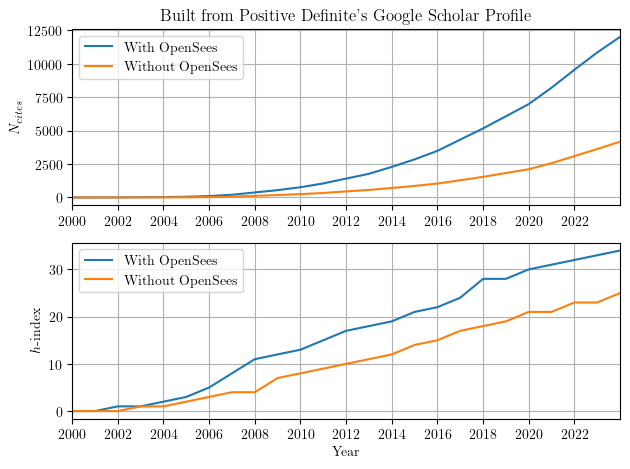OpenSees Cloud
OpenSees AMI
With or Without You
Original Post - 15 Feb 2020 - Michael H. Scott
Show your support at Buy Me a Coffee.
Citation-based metrics are like lottery tickets–they are not for investment purposes and should be used for entertainment only. Unfortunately, some promotion and tenure evaluators treat citation-based metrics like investment decisions.
To aid in evaluation, citation-based metrics are readily available online, ranging from Web of Science, which indexes only archival publications, to Google Scholar, which indexes pretty much anything posted on the internet. I prefer Google Scholar because it counts the numerous citations that are not to the OpenSees marker paper. We prefer and advocate for what makes us look good, right?
The hodge podge of non-archival citations is primarily to the OpenSees website and the user manual. But what happens when I remove this mixed bag of citations from my Google Scholar profile? As shown below, it’s a big difference.

As of 2019, my total citations reduce by a factor of about three and my h-index drops from 25 to 17 when the non-archival OpenSees citations are removed. Although the difference in the number of citations has grown exponentially since 2008, the difference in h-index has held steady between 6 and 8.
So, is ~4000 citations and 8 h-index points all OpenSees is worth? Probably not, but it’s entertaining to examine. Just don’t use this information to make any investment decisions.
If you too would like to scrape Google Scholar data, check out this R package.